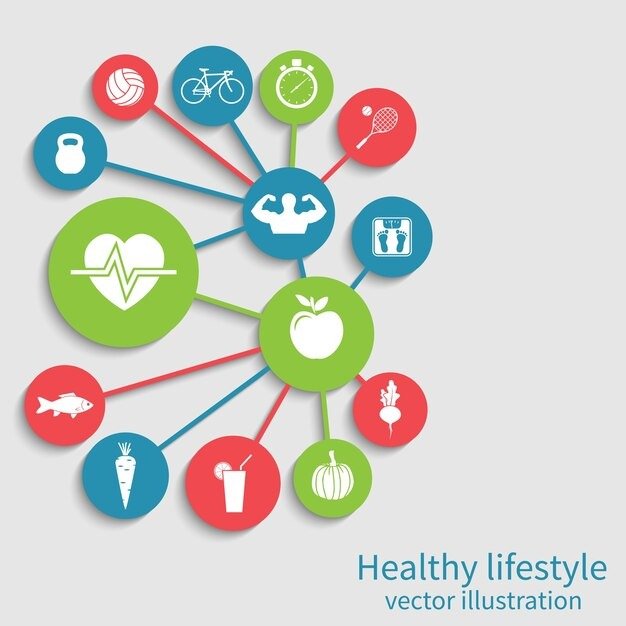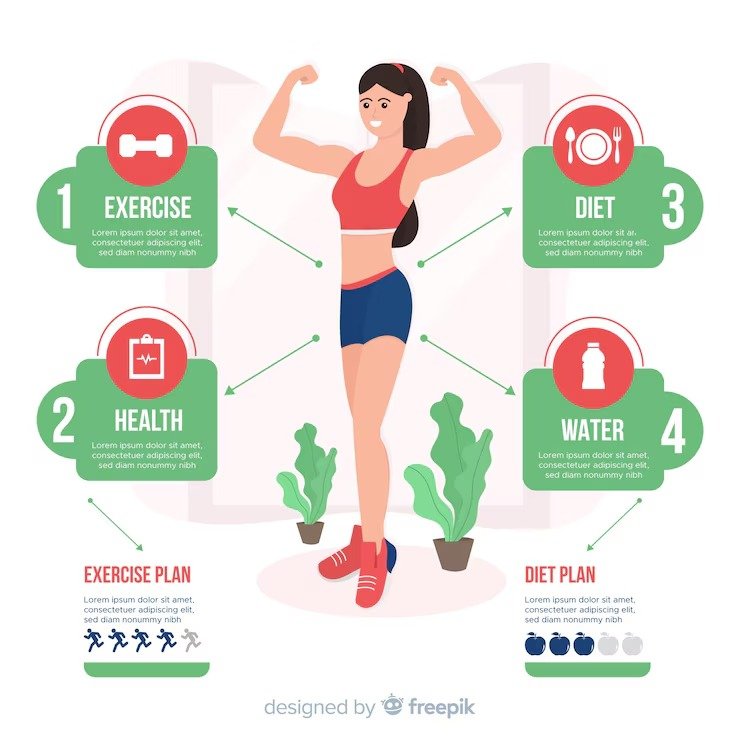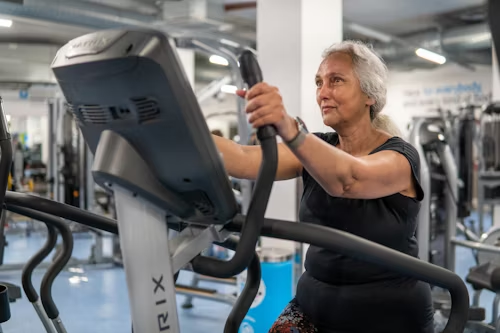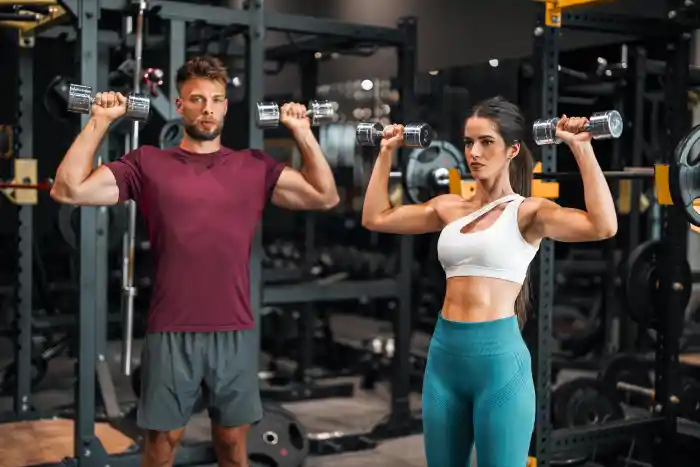Physical fitness is more than just looking good or achieving a personal best at the gym. It’s about building a balanced and healthy lifestyle that supports your overall physical and mental well-being. Whether you’re a seasoned athlete or someone looking to improve your daily health habits, understanding the five key components of physical fitness is essential.
These five components provide a framework for evaluating your fitness and crafting a sustainable workout routine. This guide dives deep into the fundamentals of cardiovascular endurance, muscular strength, muscular endurance, flexibility, and body composition, empowering you to take actionable steps on your fitness journey.
What is Physical Fitness?
Physical fitness is the ability to perform daily activities with optimal performance, endurance, and strength while managing fatigue and reducing the risk of injury. It encompasses various aspects of health to improve your quality of life. From walking up stairs without getting winded to playing with your kids without breaking a sweat, physical fitness plays a vital role in shaping your day-to-day energy and functionality.
The five components of physical fitness help create a balanced approach to improving health and avoiding burnout by focusing on different areas of movement and strength.

The Five Components of Physical Fitness
- Cardiovascular Endurance
- Muscular Strength
- Muscular Endurance
- Flexibility
- Body Composition
Now, let’s explore each in detail.
Cardiovascular Endurance
What is Cardiovascular Endurance?
Cardiovascular endurance refers to your heart and lungs’ ability to deliver oxygen-rich blood to your muscles during sustained physical activity. It’s a measure of how well your circulatory and respiratory systems can work together to keep you moving.
Benefits of Cardiovascular Endurance
- Boosts Heart Health: It strengthens the heart, making it more efficient at pumping blood.
- Improves Lung Function: Helps you breathe easier during exercise.
- Supports Mental Health: Releases endorphins, improving mood and reducing stress.
Activities to Improve Cardiovascular Endurance
Try these to enhance your stamina:
- Running or jogging
- Cycling
- Swimming
- High-Intensity Interval Training (HIIT)
- Brisk walking
Personal Story
A year ago, I couldn’t run more than half a mile without needing to stop and catch my breath. I decided to commit to three brisk walks a week and slowly added short jogs. After six months, I completed my first 5K race. That sense of accomplishment was worth every bead of sweat!
Muscular Strength
What is Muscular Strength?
Muscular strength is the maximum force a muscle group can generate in a single effort. It’s all about how much you can lift, push, or pull in one go.
Benefits of Muscular Strength
- Improves Joint Stability: Protects against injuries by supporting your joints.
- Enhances Daily Activities: Makes carrying groceries or lifting heavy objects easier.
- Boosts Metabolism: Increases muscle mass, which burns more calories at rest.
Exercises for Building Strength
- Weightlifting (e.g., squats, deadlifts)
- Bodyweight exercises (e.g., push-ups, pull-ups)
- Resistance band training
- Kettlebell workouts
Tips for Proper Form and Safety
- Warm up before lifting heavy weights.
- Maintain a neutral spine to avoid strain.
- Start with lighter weights and gradually increase load.
- Rest between strength workouts to allow recovery.
Muscular Endurance
What is Muscular Endurance?
Muscular endurance is the ability of a muscle or muscle group to perform repeated contractions over time without becoming fatigued. Unlike muscular strength, which focuses on maximum force, endurance is about sustaining prolonged effort.
Benefits of Muscular Endurance
- Supports Everyday Activities: Improves stamina for tasks such as climbing stairs or gardening.
- Enhances Athletic Performance: Vital for sports and long-distance activities.
- Reduces Fatigue: Improves energy levels for extended physical activity.
Exercises to Improve Endurance
- High-rep, low-weight strength training
- Planking or core exercises
- Circuit training
- Cycling or rowing
Muscular Strength vs. Muscular Endurance
| Feature | Muscular Strength | Muscular Endurance |
|---|---|---|
| Focus | Maximum force exertion | Sustain repeated effort |
| Examples | Heavyweight lifting | High-rep exercises |
| Benefits | Builds muscle mass | Improves stamina |
By incorporating both into your workout routine, you’ll build a versatile foundation for lifelong fitness.
Flexibility
What is Flexibility?
Flexibility refers to the range of motion around a joint or group of joints. It’s essential for reducing stiffness, improving posture, and preventing injuries.
Benefits of Flexibility
- Prevents Strains and Injuries: Keeps muscles limber and joints healthy.
- Improves Posture and Mobility: Eases tension in tight areas like the neck and shoulders.
- Enhances Performance: Helps you move more efficiently during workouts.
Stretching Exercises for Flexibility
- Static stretches (e.g., hamstring stretch)
- Dynamic stretches (e.g., arm circles)
- Yoga
- Pilates
Personal Experience
When I first started a daily stretching routine, I couldn’t touch my toes. Six weeks later, I could comfortably reach the floor, and my lower back pain disappeared!

Body Composition
What is Body Composition?
Body composition measures the ratio of fat, muscle, and bone in your body. Unlike the number on a scale, it provides a better understanding of your overall health.
Benefits of Healthy Body Composition
- Reduces Disease Risk: Lowers your chances of heart disease and diabetes.
- Improves Physical Performance: Optimizes strength-to-weight ratio.
- Boosts Confidence: Helps you feel more comfortable in your own skin.
Measuring Body Composition
- BMI (Body Mass Index)
- Body fat percentage (calipers or DEXA scans)
- Waist-to-hip ratio
Tips for Maintaining a Healthy Body Composition
- Combine strength training with cardiovascular workouts.
- Eat a balanced diet focusing on whole, nutrient-dense foods.
- Stay consistent with exercise and monitor progress.
How to Create a Balanced Fitness Routine
Integrating all five components into your fitness routine doesn’t have to be overwhelming. Here’s a sample weekly plan to get you started:
| Day | Activity |
|---|---|
| Monday | 30-min run (Cardiovascular Endurance) |
| Tuesday | Upper body strength training (Muscular Strength) |
| Wednesday | Yoga or dynamic stretches (Flexibility) |
| Thursday | HIIT workout (Combination of Components) |
| Friday | Core/plank exercises (Muscular Endurance) |
| Saturday | Outdoor activity (e.g., hiking, sports) |
| Sunday | Rest or light stretching |
This schedule ensures you’re working on each component while allowing time for recovery.
Answering Popular Questions
What is the best way to improve cardiovascular fitness?
Engage in regular aerobic exercises such as running, swimming, or cycling for 20-30 minutes at least three times per week.
Can I work on all components at once?
Yes! Incorporating activities like HIIT or full-body workouts can simultaneously improve endurance, strength, and flexibility.
What is the difference between muscular strength and endurance?
Muscular strength focuses on maximum force, while endurance emphasizes sustained effort over time.
Frequently Asked Questions
How often should I exercise?
Aim for at least 150 minutes of moderate exercise weekly, with 2-3 sessions of resistance training.
What if I’m a beginner?
Start small and gradually build up. Focus on mastering form and consistency before adding intensity.
Do I need special equipment?
Not at all! Bodyweight exercises like planks and squats are highly effective.
Building a Stronger You Starts Today
The five components of physical fitness are essential pillars for a thriving, balanced lifestyle. By incorporating cardiovascular endurance, muscular strength, muscular endurance, flexibility, and healthy body composition into your routine, you’re investing in a healthier future.
Start small, stay consistent, and don’t be afraid to seek guidance. To help you on your way, explore expert fitness programs or connect with a personal trainer who can tailor a plan to your needs. Your fitness journey begins now!




